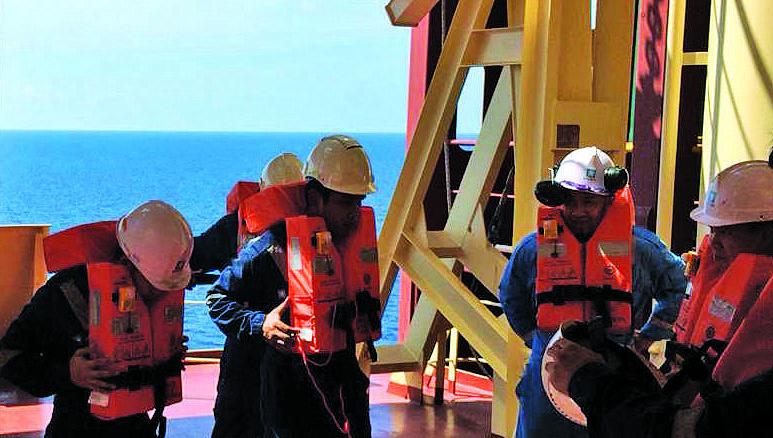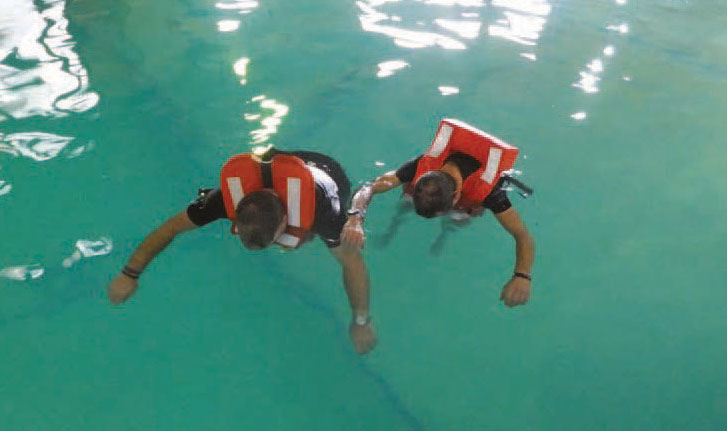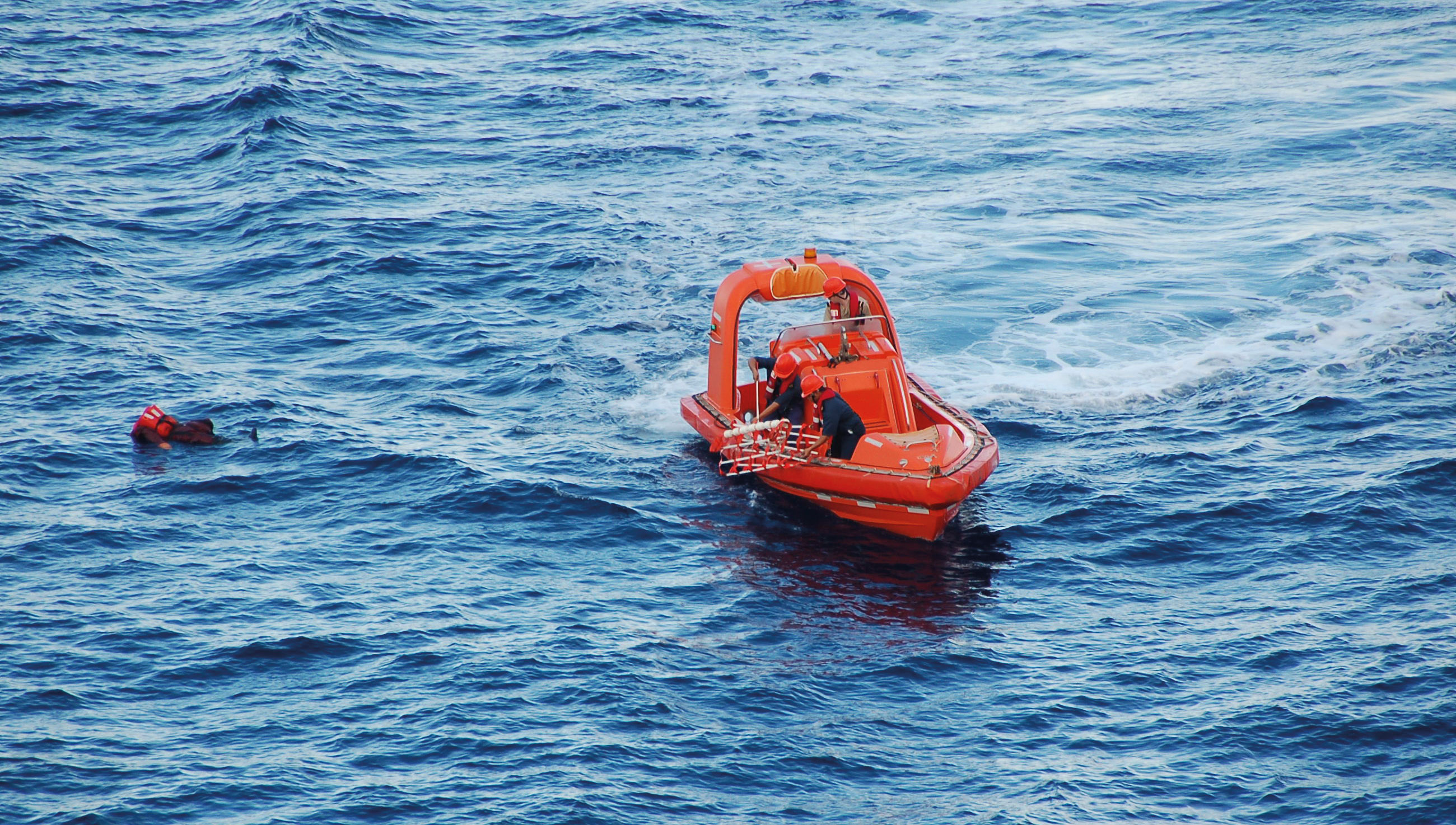- Topics
- Campaigning
- Careers
- Colleges
- Community
- Education and training
- Environment
- Equality
- Federation
- General secretary message
- Government
- Health and safety
- History
- Industrial
- International
- Law
- Members at work
- Nautilus news
- Nautilus partnerships
- Netherlands
- Open days
- Opinion
- Organising
- Switzerland
- Technology
- Ukraine
- United Kingdom
- Welfare

There's growing evidence that many perfectly legal lifejackets can do more harm than good – particularly when used without adequate training. It's time for the IMO to upgrade its standards, argues Captain MICHAEL LLOYD…
A UK Marine Accident Investigation Branch (MAIB) report on the death of three crew members following the sinking of a fishing vessel last year raised concerns over the International Maritime Organisation (IMO) standards and testing requirements of lifejackets – and not for the first time.
The investigators found that the crew had been discovered unresponsive and floating face down in the water, despite wearing 'approved' lifejackets. The MAIB called for urgent research to be carried out into the suitability of lifejacket water performance test protocols, noting that a lifejacket should turn an unconscious person onto their back and keep their airway clear of the water.
The present day SOLAS requirements apply to lifejackets provided onboard ships constructed (having their keel laid) on or after 1 July 2010. I have always failed to understand the reasoning for the inevitable conditional clause 'only to be required after a certain build date' – especially coming from an organisation purporting to be dedicated to safety at sea.
After all, why should seafarers on one ship not have a lifejacket with up-to-date design when others sailing on a ship built after a certain date have different standards? Could it be that such a clause is required by those flag states who allow the influence of shipping companies on their registry to interfere with the safety regulations?
The IMO SOLAS training manual (3.2) has guidelines for the use of lifejackets, which include a recommended maximum height of 4.5m for jumping into the water with a lifejacket on. The guidelines also instruct the user to:
- hold your nose and cover your mouth with your left hand
- check to see the life jacket is tied and all the straps secured
- cross over your left hand with your right hand and hold on to the lifejacket collar
- hold your elbows down to the side
- keep the legs together as you jump
I believe that, once again, we are losing seafarers and passengers to the inability of the IMO to act on our essential safety equipment
It should be noted that much of the above is not instructed to the passengers on most cruiseships during their pre-departure briefing. Not much good for passengers in a wheelchair either.
It is possible that when they are told that they cannot use them for heights above 4.5m, they might notice that there are no decks below this height, which suggests that they are expected to wait until the ship sinks low enough to jump – hoping that the ship is sinking on an even keel and there is no fire on their backs to encourage them to jump prior to that.
This leads to the question of how many cruiseships have notices on the rails of their decks warning passengers not to jump from these wearing their lifejackets?
Over a century ago, the inquiry into the loss of the Titanic noted that lifejackets were made of solid cork, wrapped in canvas. Although the cork provided buoyancy, many people died because of this material.
When jumping or being pushed into the water from over 10 feet up, the cork would catch the person under the jaw, snapping the head back and breaking the neck.
Lifejackets have changed little since that date. Even those of us who have experienced exercises or practice with kapok lifejackets or close-packed foam know that they can also ride up with considerable force.
A conference in 2002 concluded: 'Anyone who has spent any time in open water with any wave splash and wind understands the huge improvement in performance with the addition of a face shield and crotch strap.'
However, there is still no required spray hood or crotch strap. A survivor can inhale water and drown from spray – provided they have survived the jump without breaking their necks.
Hypothermia is a very real danger to anyone floating in water for a prolonged period, especially in non-tropical conditions.


The requirement for warm clothing is still mandatory but not enforced, especially for passengers. As the required lifejacket is not a jacket type, body heat will escape. With no hood, heat will escape from the head more than anywhere else. In water, you lose body heat 25 times faster than you do on land. Which means that even if the water is 24C (75F), you still won't last more than 12 hours in it. If the water’s below 15.5C (60F), anything over an hour puts you in serious danger.
An account from a Princess Cruises passenger about the difficulties encountered in escaping a fire through thick smoke that was filling the corridor raises the question of whether, if spray hoods were provided, the hood could be adapted to be used as a smoke hood that would allow the escape from cabins in long alleyways?
I believe that, once again, we are losing seafarers and passengers to the inability of the IMO to act on our essential safety equipment. Of course, the MAIB is correct in its call for design investigation, but I fear this will be disregarded. Even if there is action, it would most likely only be for certain ships built after a certain date. Which inevitably means that more seafarers will die, not because they are in the water, but because the equipment meant to save them is not fit for purpose.

It would help if the delegates at the IMO remembered the wise words of former secretary-general Bill O'Neil – one of the few in recent times who displayed leadership and tried to bring change: 'All IMO members have the right to a voice in defining standards and regulations that will be applied to international shipping, and that right is equal for all regardless of the size of their fleets, the strength of their economies or the depth of their maritime traditions. But the rights bring with them responsibilities and accountabilities that are commensurate with the rights.'
On this matter, let me finish with a question. Suppose a cruiseship had an accident and passengers and crew had to put on their lifejackets and jump into the sea. All the decks in this scenario were above the recommended jumping height, and there were no notices posted on the rails of those decks warning against jumping with a lifejacket on. Neither was there any warning given at the pre-sailing safety briefing and demonstration.
Now imagine if, at the inevitable inquiry into this accident, it was found that a number of the bodies had broken necks attributable to the fact that the SOLAS jackets had ridden up.
As the master and officers knew about the SOLAS recommendations not to use these from any height above 4.5m and could not prove they had made representations to their company to have them fitted with crotch straps or require notices on all decks, could the master be charged with manslaughter for not taking adequate precautions in advising the passengers not to jump?
All because of an extra few pounds for a better lifejacket.
Tags
More articles
Costa Concordia disaster prompts changes in merchant ship emergency signage
SOLAS Convention: Escape routes and safety equipment location markings requirements
Applicability: All ships constructed on or after 01 January 2019, and which undergo repairs, alterations, modifications and outfitting within the scope of SOLAS Chapters II-2 and/or III as applicable, on or after 01 January 2019.
